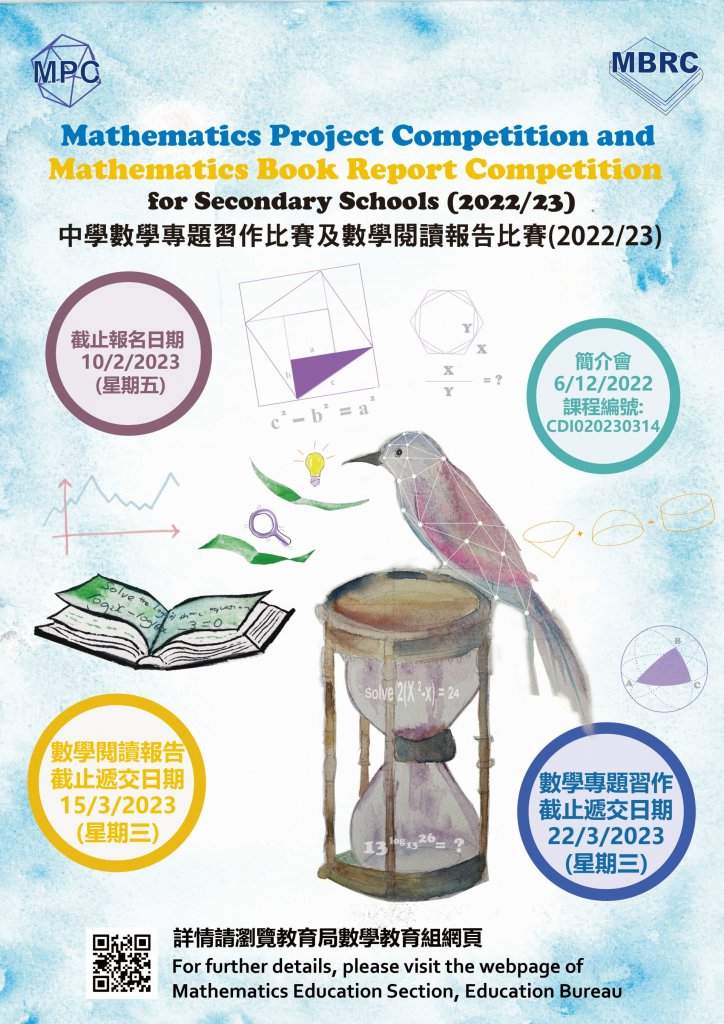
The Mathematics Project Competition for Secondary Schools is organised by the Mathematics Education Section, Curriculum Development Institute, Education Bureau. It aims at promoting students’ interest in learning Mathematics and developing students’ generic skills through project learning. The competition comprises two categories: Category A (Junior secondary project) and Category B (S1 mini-project).
CHING Helen
LI Ruyi
XIAO Jiaqi
YEUNG Man-yan Grace
LIU Zuri Jade
Level
Junior Secondary
Award
Champion and Best Presentation (Junior secondary project)
Awarded work
Brouwer's Fixed Point Theorem: Finding a Fixed Point in Triangles and Extension to Quadrilaterals
Theme of the Portfolio
Introduction
Awarded work
LI Ho-kwan
WU Yiu-cho
ZENG Yu-wai
Level
Junior Secondary
Award
1st Runner-up (Junior secondary project)
Awarded work
Investigation on the Generalization of Pick's Formula
Theme of the Portfolio
Introduction
Awarded work
CHAN Clinton Denzel Pak-hei
HUANG Kui-lam Angus
LEE Inna Belle
LIM Hiu-kwan Anson
LO Chun-lam
Level
Junior Secondary
Award
2nd Runner-up (Junior secondary project)
Awarded work
Foundations of Junior Secondary Pure Geometry --- (Re-)constructed from Junior Secondary Students' Perspectives
Theme of the Portfolio
Introduction
Awarded work
CHAN Man-chun
CHIU Yat-ting
YIU Ho-man
Level
Junior Secondary
Award
Outstanding Performance (Junior secondary project)
Awarded work
Please refer to the Chinese webpage
Theme of the Portfolio
Introduction
Please refer to the Chinese webpage
Awarded work
IP Ming-hin
MAK Ho-long Alvin
PANG Hung-yu
WANG Ming-wai Emily
WEI Jenny
Yip Wing-hong Wallace
Level
Junior Secondary
Award
Outstanding Performance (Junior secondary project)
Awarded work
Please refer to the Chinese webpage
Theme of the Portfolio
Introduction
Please refer to the Chinese webpage
Awarded work
CHAN Hiu-tsung
CHEN Wan-sum
LI Tsz-muk
MA Hau-wing
SHI Wai-yi
ZHONG Tsz-shan
Level
Junior Secondary
Award
Outstanding Performance (Junior secondary project)
Awarded work
Please refer to the Chinese webpage
Theme of the Portfolio
Introduction
Please refer to the Chinese webpage
Awarded work
CHAN Pui-kei
HO Pui-fei
WONG Kaylie
XU Jiayan
ZHENG Ziling Linnie
Level
Junior Secondary
Award
Outstanding Performance and Mathematical Modelling Award(S1 mini-project)
Awarded work
An Investigation on University Applications using Mathematical Modelling
Theme of the Portfolio
Introduction
Awarded work